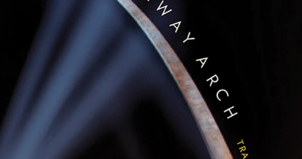The Gateway Arch : A National Icon with a Troubled Past
An abstract and mysterious structure, the Gateway Arch in St. Louis conveys wonder, but leaves many visitors questioning the “why” behind the monument. Its history is surprisingly sordid. In The Gateway Arch: A Biography, a new addition to the Icons of America series, author Tracy Campbell documents the series of questionable political maneuvers, accusations of plagiarism aimed at Arch architect Eero Saarinen, and city planning failures that built this national monument.
To get off of the ground, the Arch required voter approval of a $30 million expenditure. This was an incredible amount for St. Louis, a struggling city in the 1930s. As Campbell tells the University of Kentucky News in an interview on the The Gateway Arch, “the election was fraudulent in a lot of ways – that thousands and thousands of false voters were registered in empty parking lots or run down tenements, but that was necessary to get the approval of the voters.”
The Gateway Arch provides an interesting case study on the results of pork-barrel spending on the economic life of a city. In the context of the current debt crisis, it inspires reflection on the current and past financial strategies for dealing with economic depression and recession. In the 1930s, election fraud approved funds to start the monument project that, while beloved, failed to inspire the economic development that city planners hoped—an interesting consideration to keep in mind for determining the legacy of our current financial decisions.




























